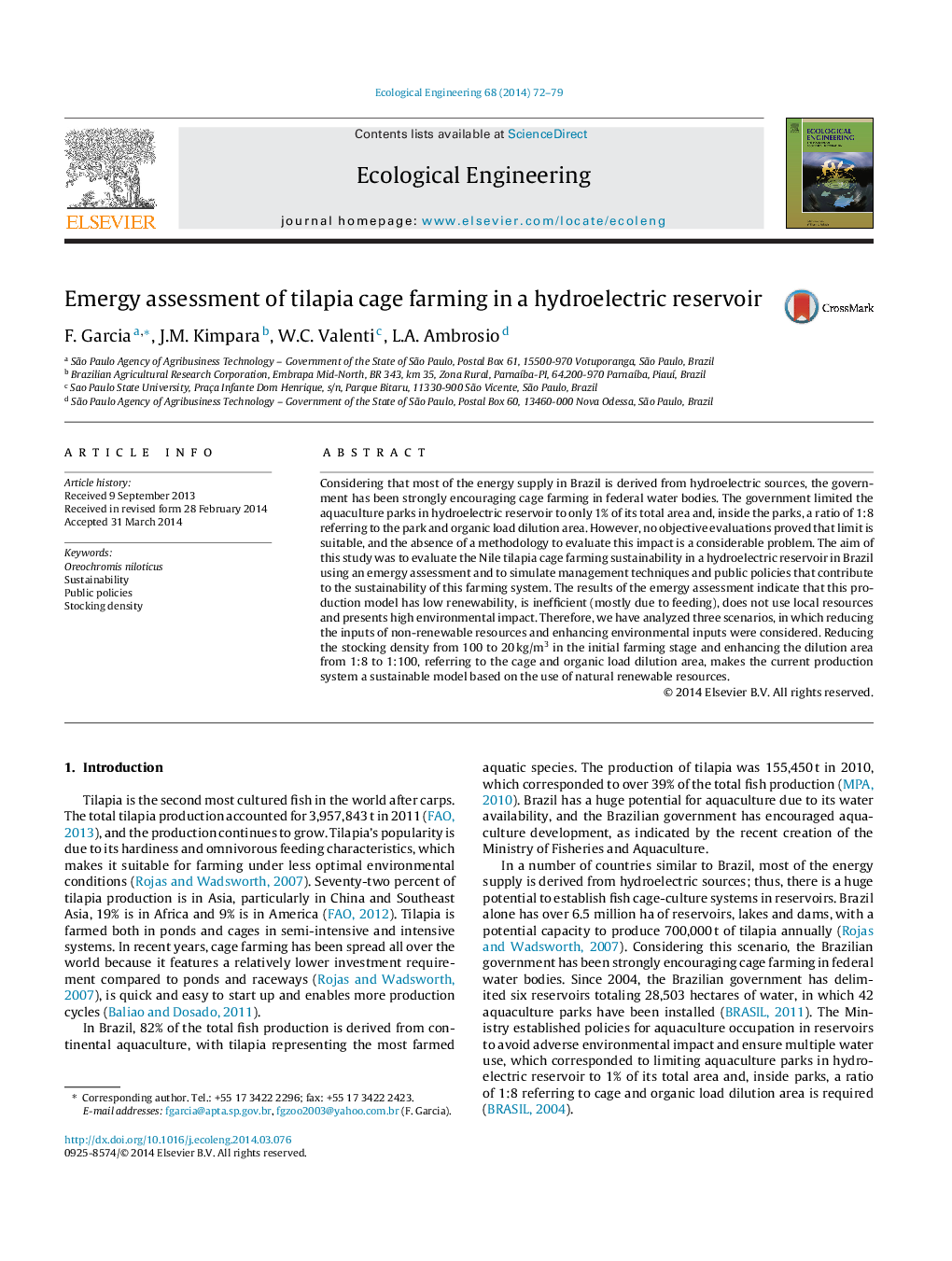| کد مقاله | کد نشریه | سال انتشار | مقاله انگلیسی | نسخه تمام متن |
|---|---|---|---|---|
| 6302284 | 1618031 | 2014 | 8 صفحه PDF | دانلود رایگان |
عنوان انگلیسی مقاله ISI
Emergy assessment of tilapia cage farming in a hydroelectric reservoir
ترجمه فارسی عنوان
ارزیابی اضطراب کشاورزی کلزا در مخزن هیدروالکتریک
دانلود مقاله + سفارش ترجمه
دانلود مقاله ISI انگلیسی
رایگان برای ایرانیان
کلمات کلیدی
موضوعات مرتبط
علوم زیستی و بیوفناوری
علوم کشاورزی و بیولوژیک
بوم شناسی، تکامل، رفتار و سامانه شناسی
چکیده انگلیسی
Considering that most of the energy supply in Brazil is derived from hydroelectric sources, the government has been strongly encouraging cage farming in federal water bodies. The government limited the aquaculture parks in hydroelectric reservoir to only 1% of its total area and, inside the parks, a ratio of 1:8 referring to the park and organic load dilution area. However, no objective evaluations proved that limit is suitable, and the absence of a methodology to evaluate this impact is a considerable problem. The aim of this study was to evaluate the Nile tilapia cage farming sustainability in a hydroelectric reservoir in Brazil using an emergy assessment and to simulate management techniques and public policies that contribute to the sustainability of this farming system. The results of the emergy assessment indicate that this production model has low renewability, is inefficient (mostly due to feeding), does not use local resources and presents high environmental impact. Therefore, we have analyzed three scenarios, in which reducing the inputs of non-renewable resources and enhancing environmental inputs were considered. Reducing the stocking density from 100 to 20Â kg/m3 in the initial farming stage and enhancing the dilution area from 1:8 to 1:100, referring to the cage and organic load dilution area, makes the current production system a sustainable model based on the use of natural renewable resources.
ناشر
Database: Elsevier - ScienceDirect (ساینس دایرکت)
Journal: Ecological Engineering - Volume 68, July 2014, Pages 72-79
Journal: Ecological Engineering - Volume 68, July 2014, Pages 72-79
نویسندگان
F. Garcia, J.M. Kimpara, W.C. Valenti, L.A. Ambrosio,
